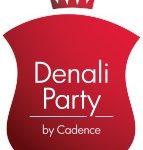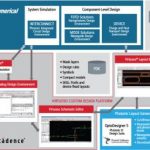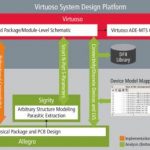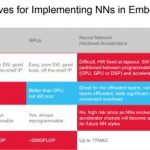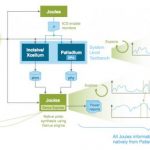This year Cadence Design Systems is showcasing system design enablement in their booth, capitalizing on the industry shift from naked chip design to system level chip design. Apple started it with making the chips inside the iProducts as part of the system and now other systems companies are looking to take more control over their… Read More
Photonics at DAC – Integrated Electronic/Photonic Design Flow to be Presented at Cadence Theater
I recently wrote an article on SemiWiki talking about the integrated Electronic/Photonic Design Automation (EPDA) flow that is being developed by Cadence Design Systems, Lumerical Solutions and PhoeniX Software and how that flow is now expanding into the system level through SiP (system in package) techniques.
Up till recently,… Read More
System Implementation Connectivity Verification and Analysis, Including Advanced Package Designs
Regular Semiwiki readers are aware of the rapid emergence of various (multi-die) advanced package technologies, such as: FOWLP (e.g., Amkor’s SWIFT, TSMC’s InFO); 2D die placement on a rigid substrate (e.g., TSMC’s CoWoS); and, 2.5D “stacked die” with vertical vias (e.g., any of the High Bandwidth Memory,… Read More
Getting to IP Functional Signoff
In the early days of IP reuse and platform-based design there was a widely-shared vision of in-house IP development teams churning out libraries of reusable IP, which could then be leveraged in many different SoC applications. This vision was enthusiastically pursued for a while; this is what drove reusability standards and … Read More
CPU, GPU, H/W Accelerator or DSP to Best Address CNN Algorithms?
If you read an article dealing with Convolutional Neural Network (CNN), you will probably hear about the battle between CPU and GPU, both off-the-shelf standard product. Addressing CNN processing needs with standard CPU or GPU is like having to sink a screw when you only have a hammer or a monkey wrench available. You can dissert… Read More
System-Level Power Estimation
When I first saw that Rob Knoth (Product Director at Cadence) had proposed this topic as a subject for a blog, my reaction was “well, how accurate can that be?” I’ve been around the power business for a while, so I should know better. It’s interesting that I jumped straight to that one metric for QoR; I suspect many others will do the same.… Read More
EDA CEO Outlook 2017
A long standing tradition has returned to EDA: The CEO Outlook sponsored by ESDA (formerly EDAC) which alone is worth the price of membership! Not only do you get a free meal, the event included quality networking time with the semiconductor elite. In the past, financial analysts moderated this event holding the CEO’s feet to the… Read More
Lip-Bu on Opportunity
Given a chance to talk with someone as connected as Lip-Bu Tan (President and CEO of Cadence and Chairman of the VC firm Walden International), it is tempting to ask all the usual questions about industry growth and directions in cloud, automotive, IIoT, AI and so on. I wanted to try something different. If you make a living (or plan… Read More
The CDNLive Keynotes
I’m developing a taste for user-group meetings. In my (fairly) recently assumed role as a member of the media, I’m only allowed into the keynotes, but from what I have seen, vendors work hard to make these fresh and compelling each year through big-bang product updates and industry/academic leaders talking about their work in bleeding-edge… Read More
Virtual Reality
In the world of hardware emulators, virtualization is a hot and sometimes contentious topic. It’s hot because emulators are expensive, creating a lot of pressure to maximize return on that investment through multi-user sharing and 24×7 operation. And of course in this cloud-centric world it doesn’t hurt to promote cloud-like… Read More

